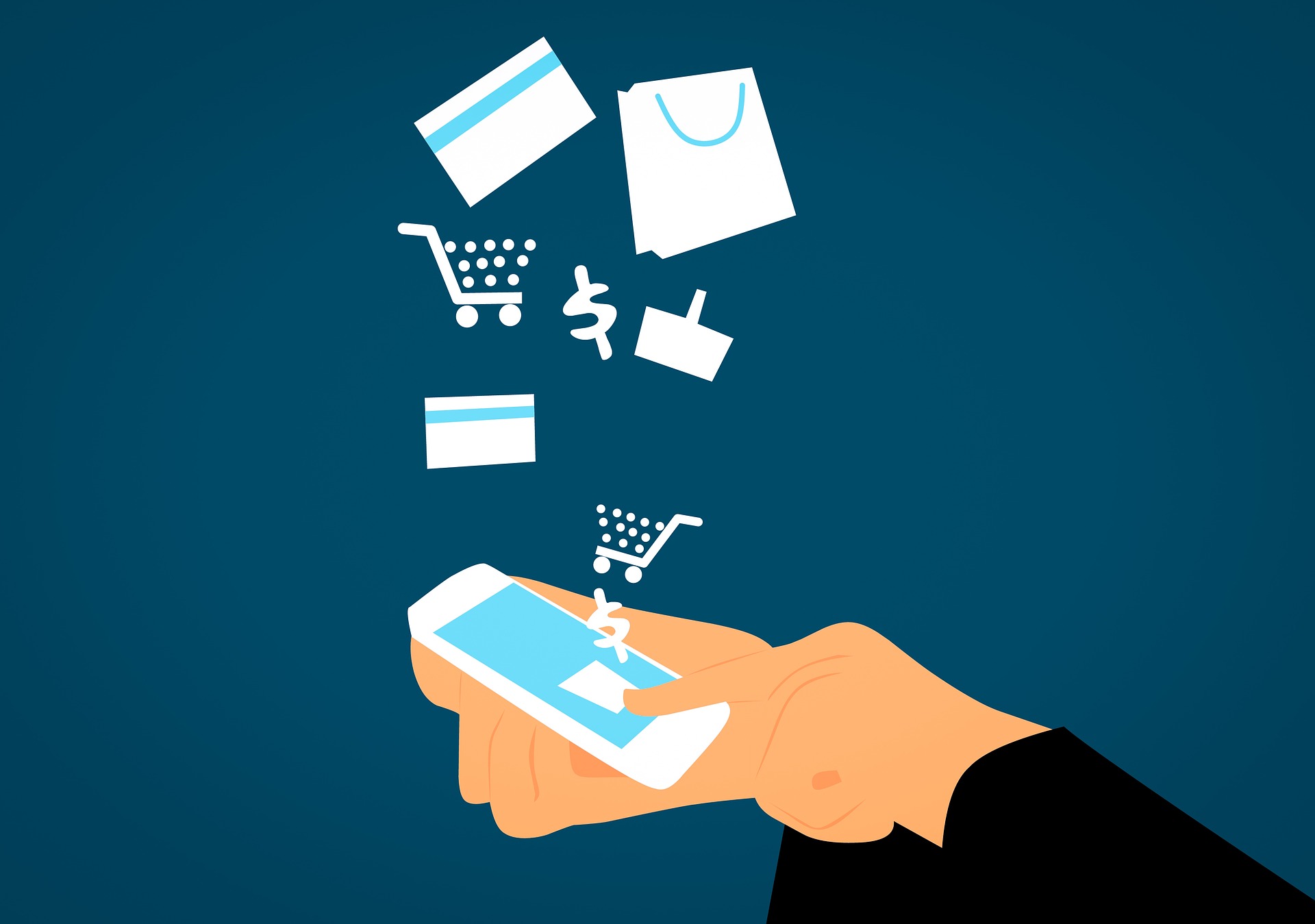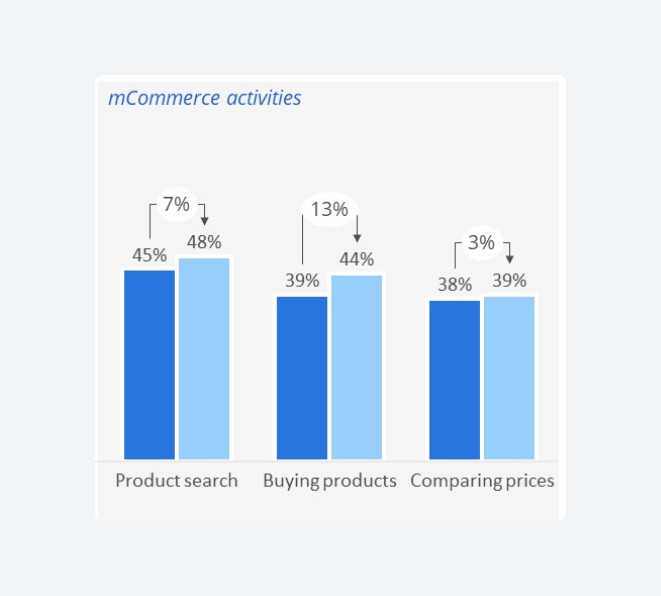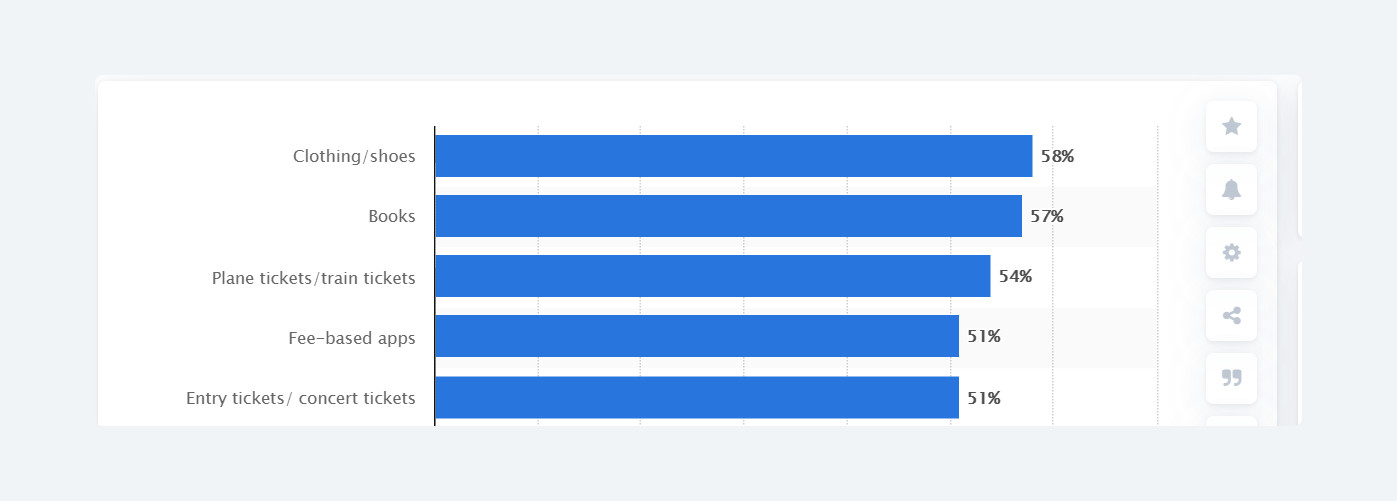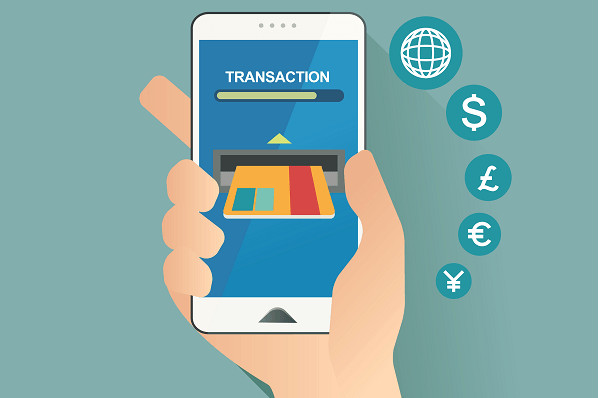M-commerce in Germany
Written by
Kinga EdwardsPublished on

M-commerce is short for mobile commerce. Simply saying it is e-commerce but via mobiles. It is getting more and more popular. No surprise, since we all spend over 3 hours a day using the phone. How does m-commerce present in Germany? We have covered the topic and showed you some interesting statistics in m-commerce topics. Lets’ dive in!
E-commerce vs m-commerce
E-commerce is so popular among German users. It is the second-largest market in this sector. But what about m-commerce? Its popularity is constantly growing. Germans prefer to search and compare prices on mobile but do shopping on desktop. It may be provided by fear of mobile transactions’ security. We all know that Germans are not the most trusting nation in the world. But they are slowly getting convinced about it. In 2019 m-commerce stood for around 40% of digital sales.

M-commerce activities 2018 vs 2019 among German users
Why is it so popular?
The most obvious answer is: because it is convenient. We have our mobile constantly at our fingertips. Most of the German users’ buy products that are not very expensive. Almost 60% of them buy clothes and shoes via mobile. Little less buy books. Plane and train tickets are also popular purchases in this case.

One of the main reasons why m-commerce is getting so popular is the fact that many stores came up with dedicated apps. And this is a huge convince when it comes to shopping. You have all your purchases’ details in one place. Also searching for items and payment processes are easier. Many apps allow to connect them with a credit card which is another pro.
The undeniable fact that affects the popularity of m-commerce is that we are bombarded with advertising content every day. Digital ads, sponsored posts, or videos. There is a lot of it. It is forecasted that Digital Advertisement segment in Germany will reach US$9,873m in 2020. No surprise that the average German consumer is bombarded by ads since ads are so big investments. And how the advertising mechanism works. The users see products that are interesting to them (thanks to cookies), click on the ad, and m-commerce starts here. Now is time for the research, comparing with other products and eventually making a purchase.
Mobile payments in Germany

Despite the fact that until recently, the favourite payment method of Germans was paying by invoice, online payments are gaining popularity. In 2019 almost 7 million German users paid via mobile payments at least once within a half year period. In 2023, it is expected to be over 10 million users.
The leading mobile payment apps in German are PayPal, Apple Pay, Google Pay and Payback Pay. Also, mobile banking is quite a good solution for distrustful Germans. Sparkasse and Deutsche Bank provide such an option for their clients. The fact, that banks are signing a payment method by its name, provides a sense of security for consumers. German users also appreciate payments via retailers apps such as Starbucks, Netto or Edeka.
The mobile payments market is still developing in Germany. There are many opportunities in this area but what should be highlighted in communication about such methods is security. For Germans, it is a priority. Without being 100% sure about data and money’s safety they won’t choose this method.
Conclusion
M-commerce market has big potential in Germany. It is still developing but also slowly winning the hearts of the Germans. What is worth to mention that thanks to the fact that German users are getting a little less distrustful when it comes to the online world, m-commerce has a chance to repeat the e-commerce’ success. We will see what time will give us but there is a big chance that 2020 and pandemic situation around the world would have ultimately a big impact on German m-commerce.


